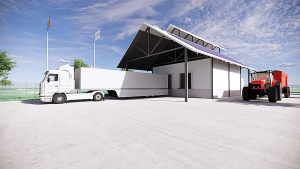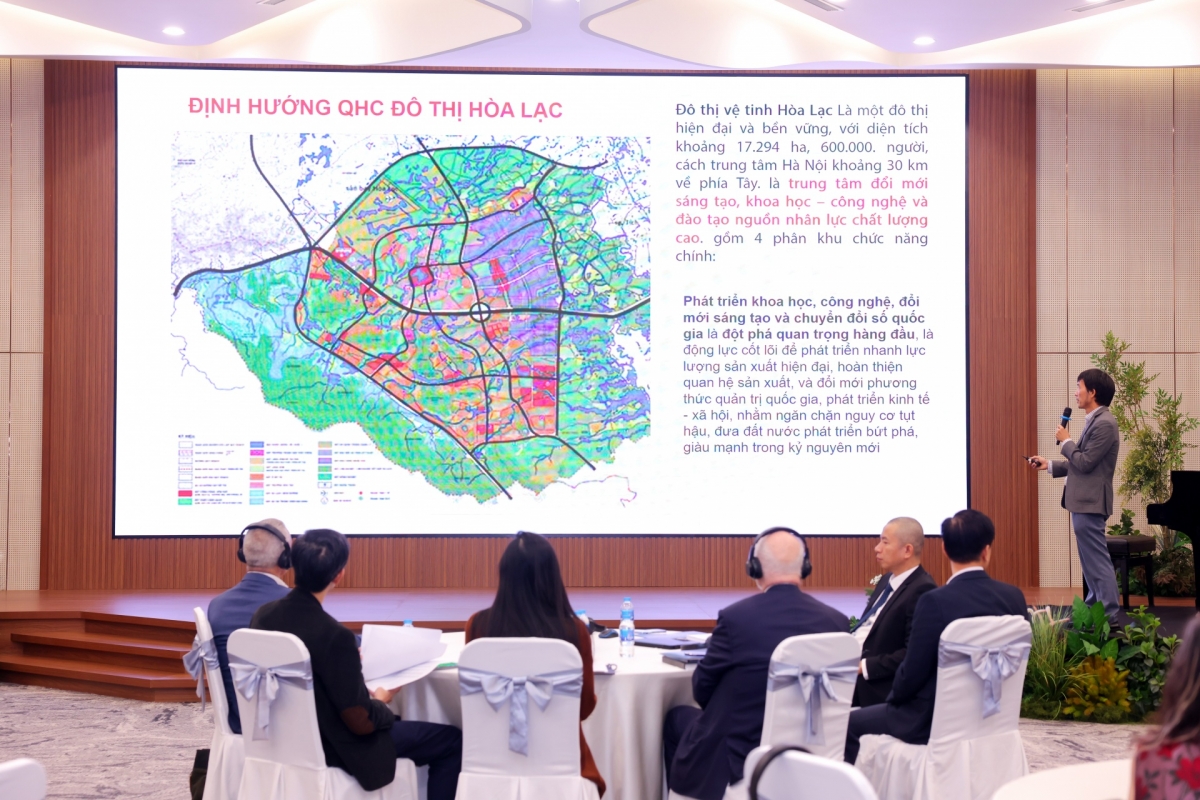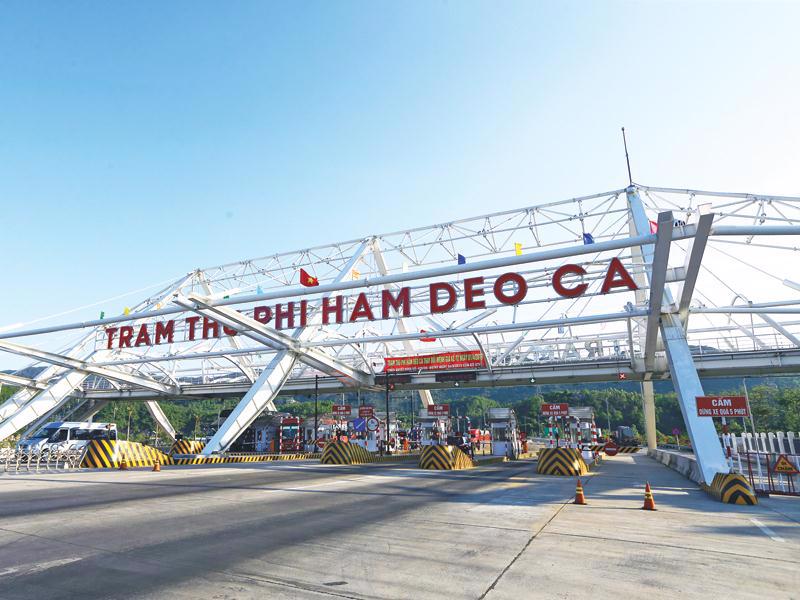INTERNATIONAL INVESTMENT
AND PORTAL
At the panel discussion 'Smart Logistics and Seaports Linked to Dual-Transformation Goals', held during the 2025 Autumn Economic Forum in Ho Chi Minh City on November 26, business leaders and policymakers highlighted how careful planning and modern technologies could position Vietnam at the forefront of regional logistics.
 Photo: Trong Tin
Photo: Trong Tin
According to Benoit de Quillacq, CEO of MSC Vietnam, part of the MSC Group, a major global shipping and logistics company, reducing carbon emissions and digitising operations are crucial. “Our company is also developing new, greener fleets. These transformations aim to enhance competitiveness and build resilience in trade,” he said. “If you put yourself in the shoes of a customer or a global shipping company, you want your container to depart and arrive in Vietnam directly and on time. That requires strong connectivity from deepwater ports and logistics hubs.”
In the South, the Cai Mep area currently connects to Ho Chi Minh City’s inland container depots via inland waterways. However, the transit time from Cai Mep to the city centre can be as long as the transit time from Singapore to Cai Mep. This is a key issue Vietnam must address.
“It is essential to ensure that barges operate on schedule for smooth cargo flow. Domestic connectivity is as important as offshore connectivity; if the domestic network is congested, the entire supply chain collapses,” de Quillacq noted.
Vietnam is competing with major Asian ports such as Shanghai and Singapore. At present, only two container ports in Vietnam can receive ultra-large vessels. This is positive, but still insufficient, given the continued market growth and increasing vessel size.
“We want to bring even larger vessels to Vietnam, and to achieve that, ports must have adequate capabilities and capacity. Vietnam need not be just a transshipment port, it can be a direct port of call delivering goods straight to customers,” de Quillacq added.
However, hosting mega vessels requires ports designed with efficient connectivity for feeder vessels and barges.
Benjamin Lim, senior director of Strategy at YCH Group, a Singapore-based supply chain and logistics company, also believes Vietnam has the potential and opportunity to become a major connectivity hub. “YCH Group has shifted its strategy towards developing ‘super ports.’ We established an office in Hanoi because we clearly see Vietnam’s potential,” he said.
Lim explained that a super port must integrate multimodal transport. Relying solely on road transport is insufficient. To achieve this, infrastructure must support seamless intermodal connectivity.
Regarding workers, YCH helps Vietnam enhance capacity through specialised training systems. The company recruits Vietnamese students from universities and trains them in Singapore for nine months in fields such as warehouse management, knowledge that is not fully taught in university classrooms, before bringing them back to work in Vietnam’s logistics industry.
Bui Xuan Cuong, vice chairman of the Ho Chi Minh City People’s Committee, believes with global digital and green transformation accelerating, logistics and seaports play a crucial role in enhancing national competitiveness, ensuring smooth supply chains, and fostering sustainable development.
“As the country’s largest economic hub, Ho Chi Minh City plays a significant role in the regional logistics network. It is also the largest maritime and trade gateway connecting Vietnam with the world,” he said.
The city is focusing on developing a modern, smart, and green logistics ecosystem linked to key port clusters such as Cai Mep, Cat Lai, and Hiep Phuoc (Thi Vai area). A highlight is the Can Gio International Transshipment Port, a strategic undertaking expected to be a major breakthrough in the city’s marine economy.
The city is also synchronising logistics infrastructure planning, applying digital and AI technologies, and cutting carbon emissions to meet “green port” standards. At the same time, it is boosting regional connectivity and public–private partnerships to develop regional logistics centres effectively linked with seaports and industrial zones across the city and surrounding areas.
“From today’s ideas, we can work together to form concrete projects, practical initiatives, and long-term cooperation schemes. These will help Vietnam and Ho Chi Minh City become a green, smart, and digitally connected logistics centre for the entire region,” said Cuong.
Dang Minh Phuong, chairwoman of the Ho Chi Minh City Logistics and Port Association, noted that Vietnam’s logistics sector has grown rapidly, contributing about 4–5 per cent to GDP. The sector has maintained an annual growth rate of 14–16 per cent from 2007 to 2023.
"The seaport economy is currently valued at around $52 billion in 2025 and is expected to reach $72 billion by 2030, with a compound annual growth rate (CAGR) of 6.6 per cent," she said.
In the Logistics Performance Index, Vietnam ranks 43rd among 139 countries and fifth in ASEAN. By 2030, Vietnam’s logistics and freight sector is expected to grow at a CAGR of 6.7 per cent.
Overall, although progress has been uneven, the sector continues to develop. “We are improving efficiency and aligning more closely with international standards, achieving stronger competitiveness,” said Phuong.
Phuong noted that green logistics and digitalisation align well with Vietnam’s national policies. Vietnam has the opportunity to make significant leaps by adopting smart port technologies and green infrastructure to enhance competitiveness.
These opportunities reflect Vietnam’s rapid rise on the global trade map and its readiness to move into a higher stage of development.
However, infrastructure capacity and chronic traffic congestion remain major bottlenecks. Many key routes still suffer persistent congestion.
“Therefore, with a vision towards 2030–2035 to build a more modern, greener, and more competitive port and logistics system, three foundational pillars must be emphasised: world-class infrastructure and connectivity; green and sustainable development; and a smart, digital ecosystem,” Phuong said.
Phuong added that these three pillars will shape Vietnam’s logistics system to become greener and smarter by 2030.
“To realise this vision, port planning must align with port development strategies, logistics corridors, and industrial expansion to reduce congestion and improve efficiency,” she added.
She also stressed the need to promote public–private partnerships and engage private investment. Vietnam needs greater investment in logistics and regional infrastructure, and private-sector participation is essential.
 Ice-Loft targets development of a smart cold chain model
Ice-Loft targets development of a smart cold chain model
The ambition of Belgian cold chain enterprise Ice-Loft to build a smart cold logistics system in Vietnam would complete logistics services and redirect the nation’s main fruit exports to Europe and the Middle East, which are showing great demand for tropical fruit varieties.
 Vietnam utilising its advantages of logistics to aid supply chain advances
Vietnam utilising its advantages of logistics to aid supply chain advances
Vietnam’s logistics system remains less competitive than some neighbouring countries. Marco Civardi, CEO of JAS China , a privately-owned international freight forwarder, gave VIR’s Bich Ngoc his assessment of the shifting of manufacturers to Vietnam and how the country is positioning itself to be more integrated into the global supply chain.



















